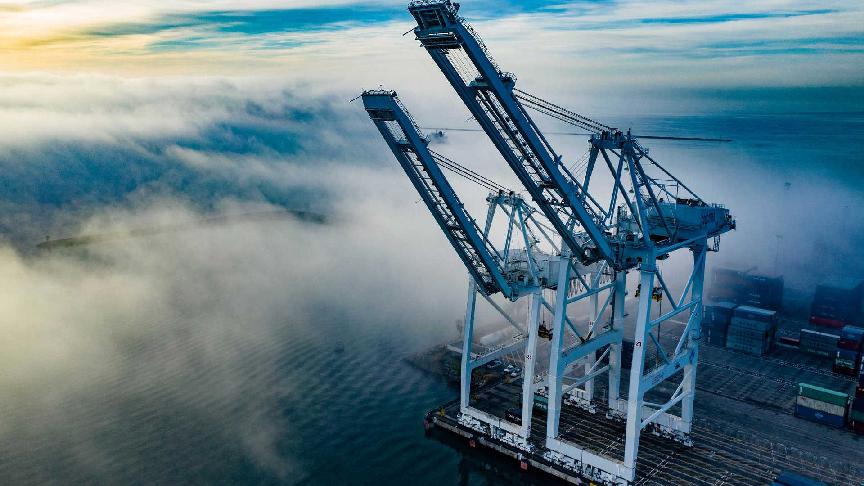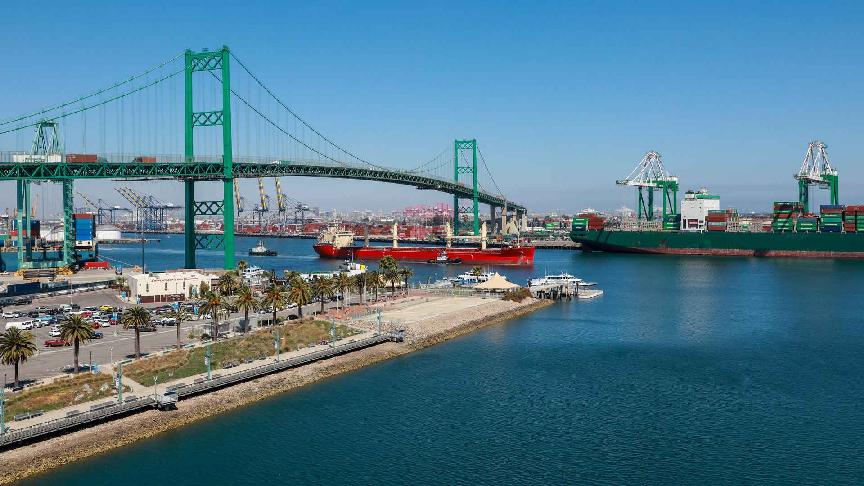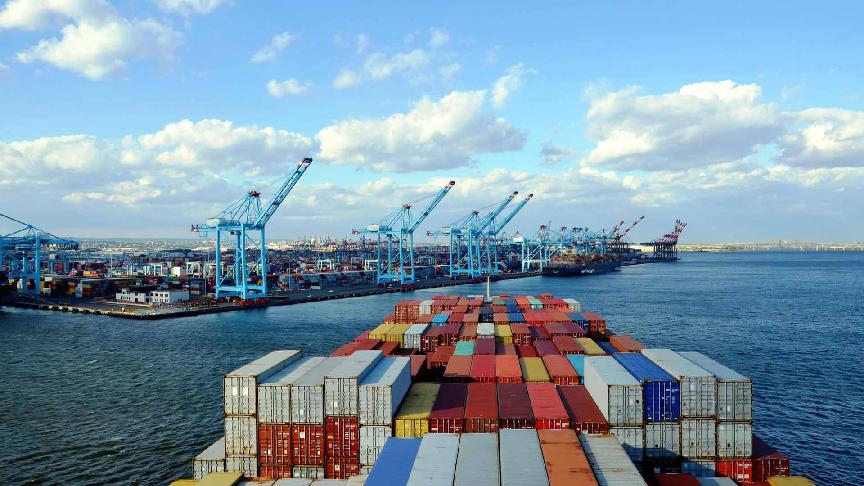1 September 2023 (Lloyd's List) - PEAK season is off to a divergent start in the US, as major east and US Gulf coast ports began the second half of the year on a stronger footing than their west coast peers. Combined import volumes in the ports of New York and New Jersey, Savannah, Houston, Virginia and Houston, were only 4.3% below the same period in the past year, when most of them were smashing monthly cargo records.
Meanwhile, the picture in the west coast ports of Los Angeles, Long Beach, Oakland, Seattle, and Tacoma is less encouraging, with combined imports falling 21.3% year on year, although last year’s levels were also near record breaking in the ports of Los Angeles and Long Beach.
Compared with pre-lockdown era levels, east and US Gulf coast ports leapfrogged July 2019 import volumes by 17.9%. By contrast, west coast ports fell 20% below July 2019 levels, although that was the west coast’s strongest month that year.
In June, imports in both peer groups were close to 19% below the same period in the past year, although west coast ports were down 7% from 2019 levels, while east and Gulf coast ports were up 12.8%.
While all east and US Gulf coast ports either improved year on year or were within single-digit declines, the port of Houston pulled ahead, with a 3.9% increase on July 2022 levels, which itself was its strongest on record. The US Gulf coast port has been outperforming other major ports throughout the year, seeing total throughput fall by just 1% year to date from the same period in the past year, and imports slide only 5.4%.
July’s strong showing in the early days of peak season brought more market share gains to major east and US Gulf coast ports. While top west coast ports made some inroads during winter, the pendulum swung eastwards again in June.
The top five east and US Gulf coast ports handled more than 1m teu for the first time since October of the past year, while those on the west handled about 800,000 teu. Combined volumes were 1.8m teu, a 12.8% year on year decline.
Port of New York and New Jersey deputy director Michael Bozza told Lloyd’s List that he expects an improved second half of the year as retailers and other importers work through inventory. That destocking effect should help push volumes up, although not to the record levels of the past year.
The port of New York and New Jersey said an increase of 40% in shipments of retail items such as apparel, toys, games, and sporting goods helped its strong performance in July. By contrast, the ports of Los Angeles and Long Beach said persistent inventory gluts were behind their soft figures.
The US National Retail Federation projected US imports will peak in August at about 10.2% below the past year’s near record figures. Final August volumes will not be out for a while, but the number of vessels arriving in the ports of Los Angeles and Long Beach by August 24 was about 20% below the average levels for the same period in 2018-2019, according to the Marine Exchange of Southern California.
That suggests more softness in the San Pedro Bay in August, although less inbound ships could also be attributed to bigger ships making fewer port calls.
In what should boost shippers’ confidence in the west coast ports, dockworkers ratified a tentative labour deal on Thursday that runs through July 2028. Cargo has been slowly shifting from west coast ports to those on the east and US Gulf coast for more than a decade, but that trend accelerated during the pandemic amid congestion on west coast terminals and labour uncertainty.
With a labour deal ratified, some cargo is expected to return west, but how much remains to be seen, as these eastward shifts were also happening independently of the supply chain crises and the recent labour unease.
Some of the reasons behind these long-term trends are the Panama Canal expansion in 2016, which allowed for larger ships to transit the Central American artery; the costliness of California’s ports; a less-friendly regulatory environment for businesses; and labour tensions that have escalated around every contract renewal since 2002.
While the current drought and congestion in the Panama Canal could ultimately change shippers’ routing considerations, boxships have not suffered meaningful delays, and the east coast ports of Savannah and New York and New Jersey have felt no impact on volumes so far, although they continue to watch the backdrop closely.







